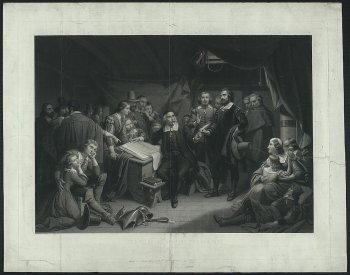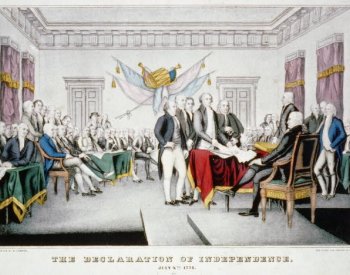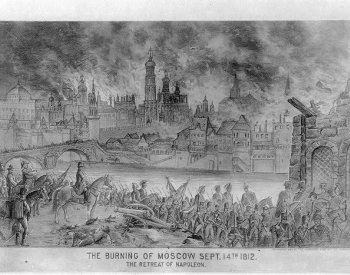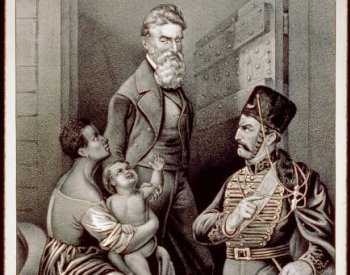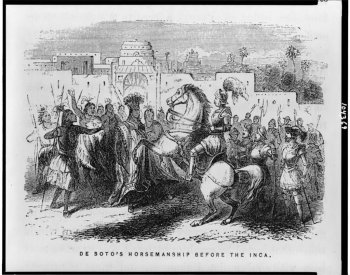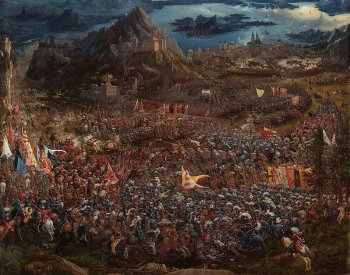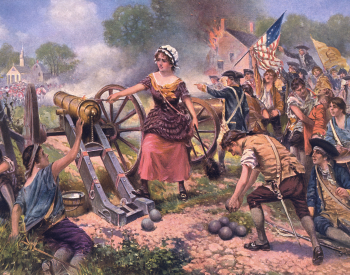To answer the question correctly, students must notice both the date of the event (1621) and the date of the painting (1932) and understand that the intervening time makes it a less useful source for a historian trying to learn about the first Thanksgiving.
Level: Proficient
Student explains why the time gap limits the reliability of the source as evidence of what happened at the first Thanksgiving.

The student recognizes the key issue: the gap in time between the source and the event it depicts.
The student correctly notes that we do not know whether the artist researched the event before creating this painting.
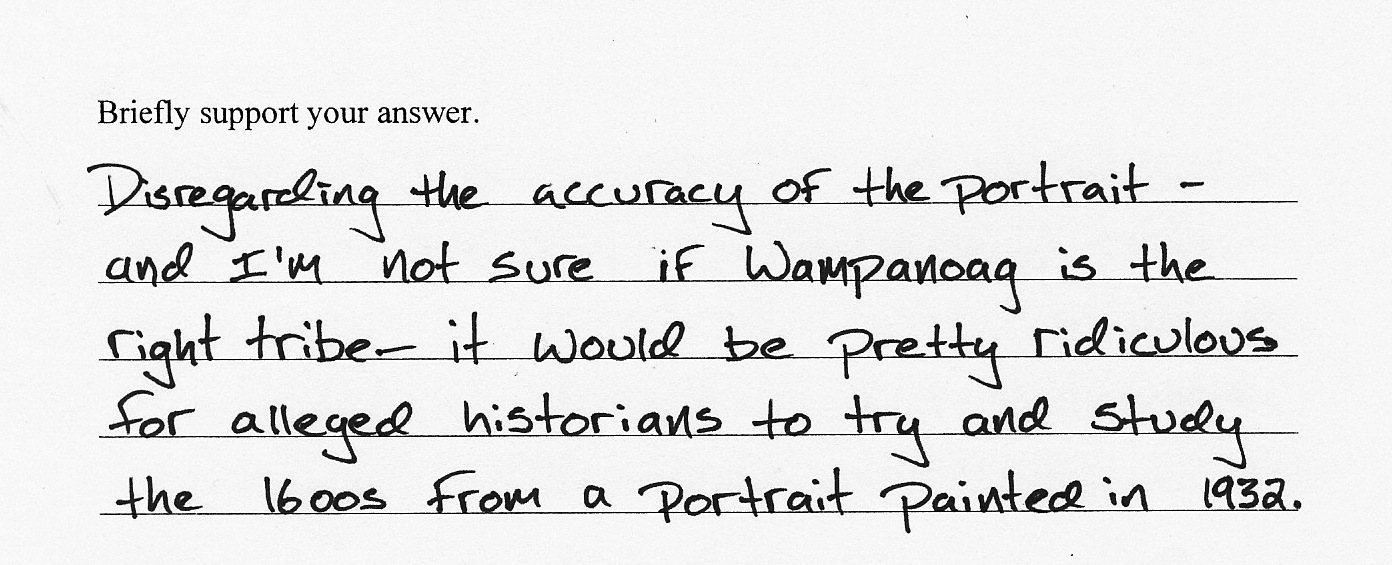
The student brackets the issue of accuracy and addresses the fundamental problem with this painting: the date of its creation.
Student identifies the key issue: the gap in time. This answer would be stronger, however, if the student were to explain WHY the gap in time limits the reliability of the painting as evidence of what happened at the first Thanksgiving.
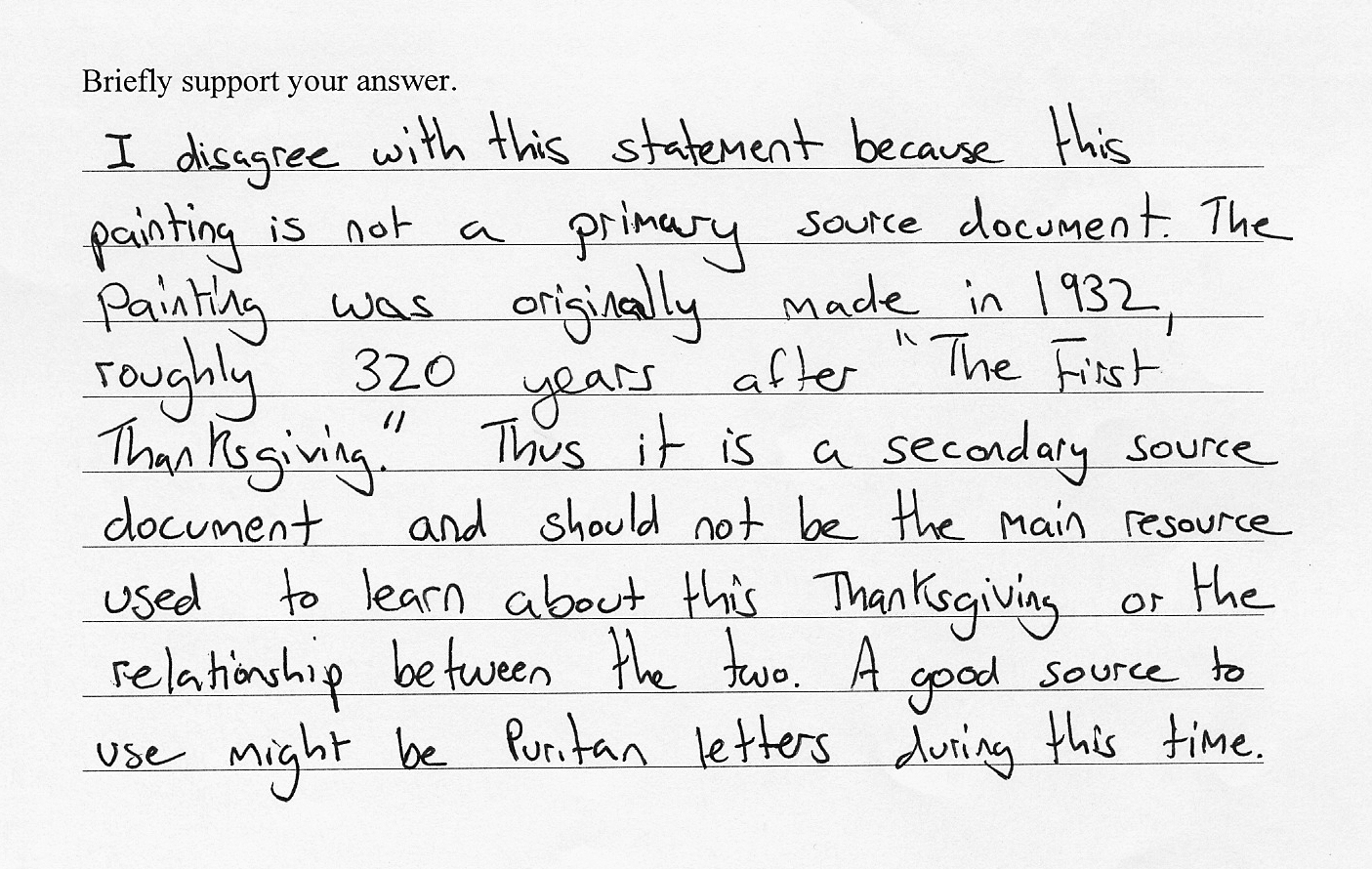
This student distinguishes among types of sources and explains that this document should not be the principle source for understanding relations between the Pilgrims and the Wampanoag.
Although not required by the prompt, the student takes the additional step of suggesting more appropriate sources for understanding the relationship between the Pilgrims and Wampanoags.
Level: Emergent
Student evaluates reliability of source but does not fully explain the problems caused by the gap in time.

This student does not explain that other sources could be used to corroborate the painting's depiction.
Although the student does not mention the date, the answer shows an understanding of the role of the creator in shaping a document's message.
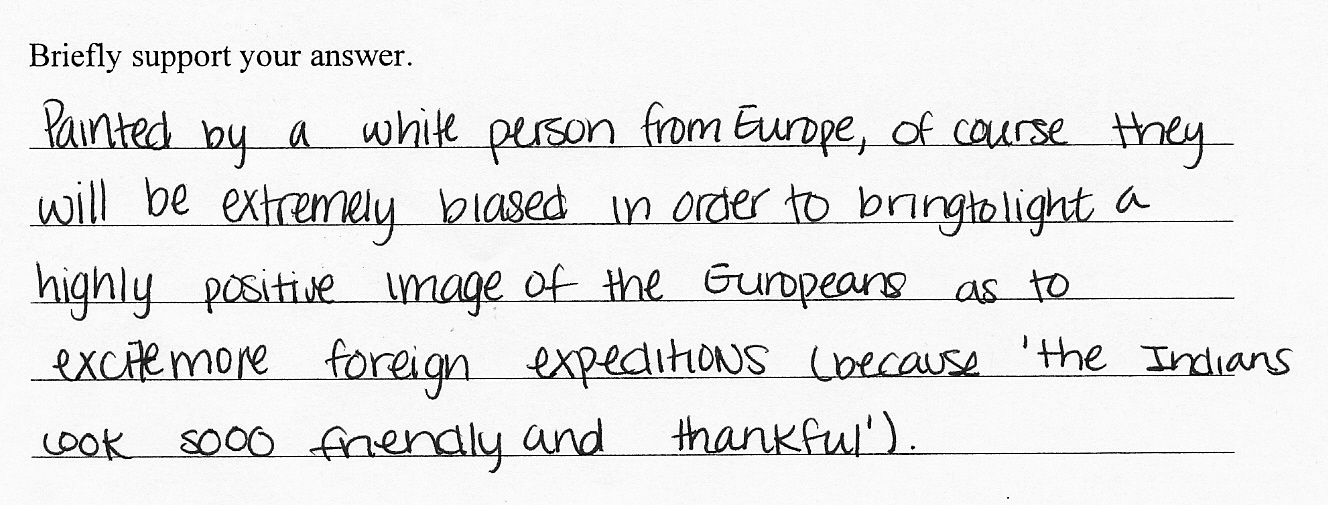
The student is examining the source critically, a step in the right direction. But then the answer makes unfounded assumptions about the painter (white? European?) and fails to note the 300 year gap. (Moreover, there were not too many "foreign expeditions" in the 1930s!).

This answer demonstrates an emerging understanding of how an artist's motivation and intent can shape representations of the past.
Level: Basic
Student does not recognize the gap in time and instead takes the painting at face value or provides an irrelevant response.

This student believes that the painting is a direct window into the past. This error -- one of the most common -- leads students to ignore the painter's role in shaping this image.
The student accepts the source because it matches preexisting knowledge of the holiday.

Common misconception: The student compares the painting to his/her own understanding of the event and judges the source to be accurate.
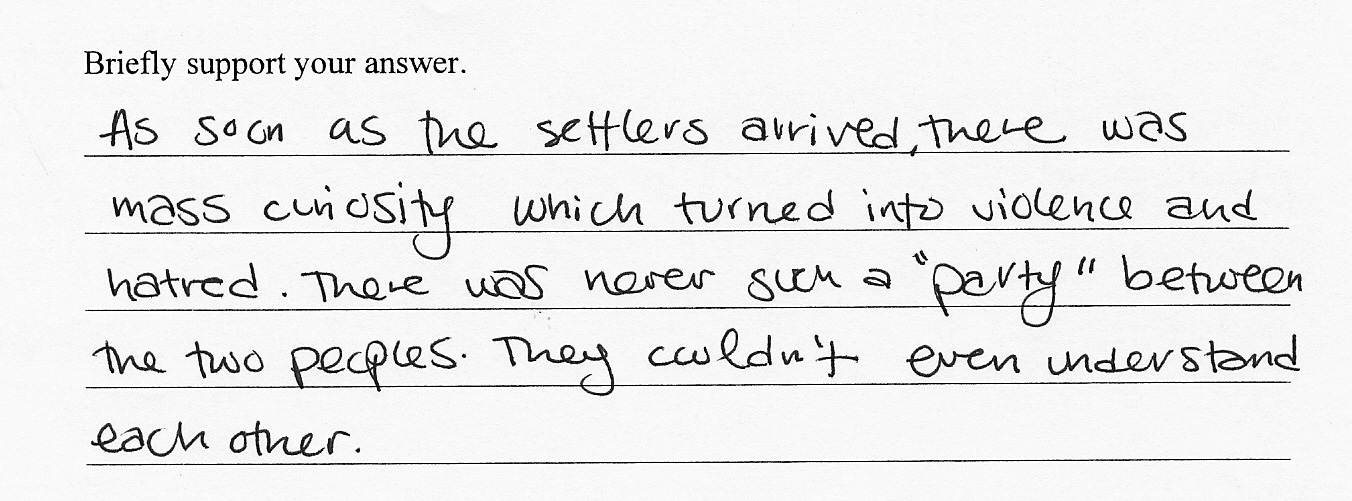
At first glance this students seems to have done something good. He has attempted to bring in background knowledge and use it to evaluate the source. Unfortunately, he ignores the date of the painting and his answer contains multiple errors.
William Bradford's travelogue provides evidence that there was some sort of meal held between the Puritans and Wampanoags. Although the documentary record can be challenged, it is not accurate to state that this Thanksgiving celebration never happened. Bradford's account is available here: archive.org/details/bradfordmanuscri00ame
In fact, the two groups could understand each other. Squanto had spent time in Europe and spoke English well.
